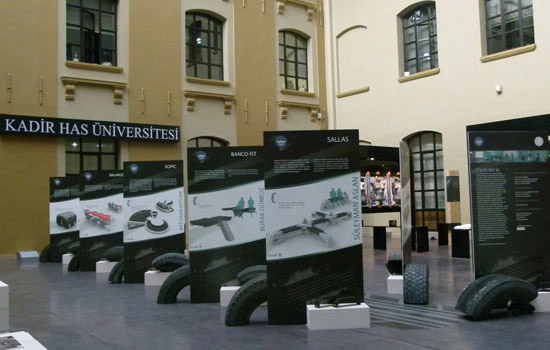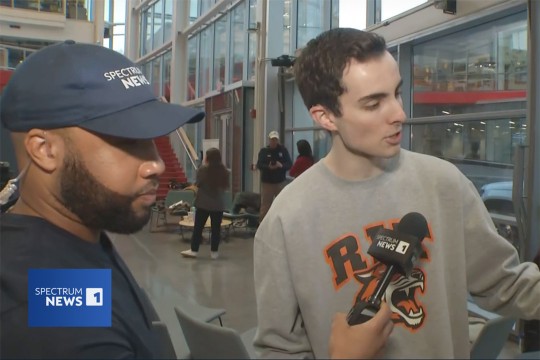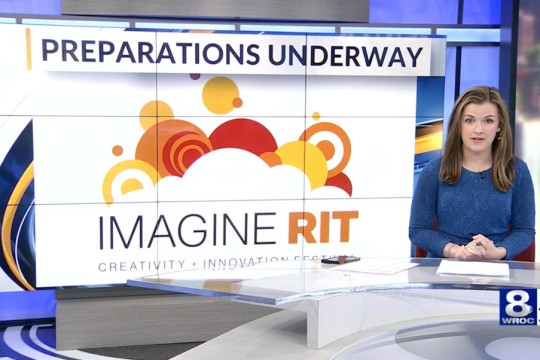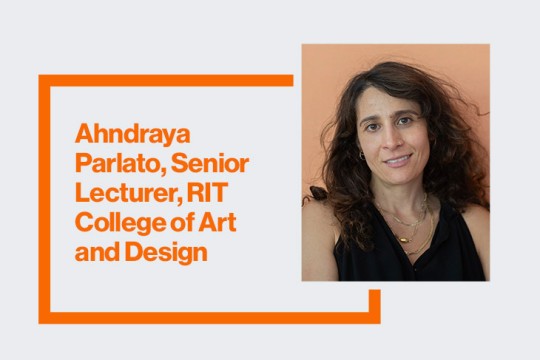Students offer design ideas for project in Turkey
Social design course has students designing with end-of-life tires for Istanbul
Students in RIT’s College of Imaging Arts and Sciences worked in teams to create proposals as part of a public space social design course. The students’ proposals are on display at the Istanbul Design Fair.
Rochester Institute of Technology students had the opportunity to create innovative, sustainable designs for a park in Istanbul, Turkey, without ever having to leave campus. The designs are now on display at the Istanbul Design Fair.
Students in RIT’s College of Imaging Arts and Sciences worked in teams to create proposals as part of a public space social design course this past spring. The course, led by professor Roberley Bell, paired industrial design students with students from other degree programs at RIT, including students from the College of Liberal Arts and the Golisano Institute for Sustainability.
Bell and her students collaborated with students at Kadir Has University in Istanbul, creating proposals for designs that incorporated old tires into an urban park in Istanbul. LASDER, an organization that strives to minimize the environmental impact of discarded tires, solicited the proposals.
The idea for the project, called Black Traces, came to Bell when she was teaching at Kadir Has University in 2010 on a Fulbright Scholar grant. LASDER wanted a new way to utilize end-of-life tires and recruited one of Bell’s colleagues at Kadir Has. Bell was asked to join the project, and she saw an opportunity to involve her RIT students.
“Teamwork is very common in U.S. education,” says Bell. “But it’s not a norm in Turkey.”
A blog was created to enable Bell’s students at RIT to be able to communicate with the students at Kadir Has in order to learn important details about Turkish culture that had an impact on the project.
“The blog was crucial in helping the students see the cultural nuances and differences, and it helped them figure out what questions to ask,” she says. “Solving the problem is easy—seeking the problem can be the hard part.”
Bell says that the blog also helped her students discover what is appropriate for different social environments.
“In the 21st century, you need to have a global perspective,” she says. “The idea of the park as a social space is a western convention, so the students had to figure out how to design in a way that is inviting to people in Istanbul.”
Submitted proposals included benches, tables, landscaping features and bicycle parking. The proposals are being shown at the Istanbul Design Fair, in an exhibition that incorporates real tires into the displays.
“It was a great chance to put yourself in someone else’s shoes. It made us think about what people in Turkey want and need,” says Kelley Lockwood, a graduate student in the environmental, health and safety management program. “Roberley was very motivating and she gave great feedback.”
Lockwood’s team created a proposal for a raised 3-D representation of a fish that could be seen from a nearby river. The goal of the design was to preserve the grass by burying the tires so that they weren’t exposed. She says that the project was a unique experience since she wants to be a project manager after graduation.
“Project managers often have to work with people they don’t know,” she says. “The experience of working with other students from RIT and from Turkey definitely helped with that.”
In the end, Istanbul gained a wealth of ideas to develop its urban park areas, while Bell’s students gained real-world learning experience. Bell says that it was an extraordinary opportunity for the students to work creatively and collaboratively.
“It was really cool to work in multidisciplinary teams,” says Jordan Pelovitz, an alumnus of the industrial design program. “I can’t wait to see what Roberley does in the future with this course, and I look forward to seeing CIAS expand their collaborative curriculum.”
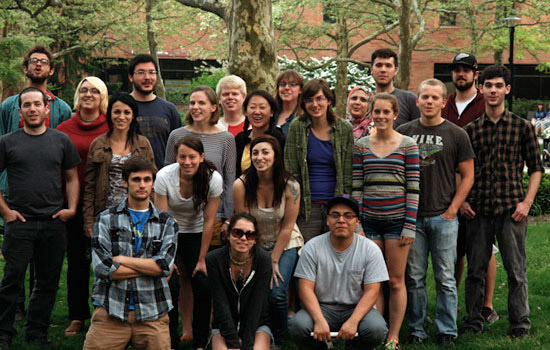 Students in RIT’s College of Imaging Arts and Sciences worked in teams to create proposals as part of a public space social design course. The course paired industrial design students with students from other degree programs at RIT.
Students in RIT’s College of Imaging Arts and Sciences worked in teams to create proposals as part of a public space social design course. The course paired industrial design students with students from other degree programs at RIT.










